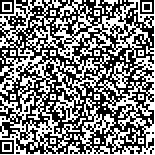| 摘要: |
| 麻痹性贝毒(Paralytic Shellfish Poisoning, PSP)毒素由石房蛤毒素(saxitoxin, STX)及其衍生物组成,目前已发现20余种,在赤潮研究、分子生物学和神经生物学基础研究、医药、军事防化等方面均有应用潜力。由于PSP毒素的稀有来源和国际社会对STX交易的禁止,限制了国内PSP毒素应用及研究的全面深入展开,因此本文作者对PSP毒素进行了自行制备,并采用不同方法对制得的PSP毒素进行了分析研究。
目前已建立了多种PSP毒素的生物和化学分析方法。小鼠法作为PSP毒素监测和定量的标准方法已有60余年的历史(Sommer et al.,1937;McFarren et al.1958;Helich,1990),它对海产品毒性的测定是很有效的方法,但难以揭示毒素的化学本质。其他生物分析方法如免疫分析等尽管灵敏度比小鼠法有所提高,但同样都面临难以揭示毒素的化学本质的难题。因此,对PSP毒素的分析还需借助仪器分析进行确证。尽管现在已针对PSP毒素建立了薄层色谱、毛细管电泳、高效液相色谱等多种化学分析方法,但真正得到广泛应用的只有高效液相色谱(High Performance Liquid Chromatography,HPLC)方法。对于这类PSP毒素的分离是基于离子对反相色谱原理,采用磷酸四丁基铵、己基磺酸盐、庚基磺酸盐、辛基磺酸盐等做离子对,在C-8或C-18反相色谱柱上进行分离。检测手段是基于PSP毒素在碱性条件下氧化——酸化后可以生成荧光衍生物这一原理(Bates et al.,1975),将PSP毒素衍生生成荧光物质,用荧光检测器进行检测。 Oshima(1989)用三个等梯度洗脱法分别成功地分离分析了PSP毒素中的N-磺酰氨甲酰基类毒素(C1-C4),膝沟藻毒素(GTX1-6)和石房蛤类毒素(STX,dcSTX和 neoSTX),全部分析采用C-8反相柱。由于这种方法几乎可以分析已知的绝大多数PSP毒素,因而被广泛接受。 |
| 关键词: 麻痹性贝毒毒素 高效液相色谱 质谱 |
| DOI: |
| 分类号: |
| 基金项目:中国科学院海洋所调查研究报告第4365号。国家高技术研究与发展规划,8638190605号;国家自然科学基金重大项目,39790110号资助;国家自然科学基金项目,40076030号,39950001号。 |
|
| STUDY ON PARALYTIC SHELLFISH POSIONING TOXINS Ⅱ. ANALYSIS OF PURIFIED PARALYTIC SHELLFISH POSIONING TOXINS BY LIQUID CHROMATOGRAPHY AND MASS SPECTROMETRY |
|
WANG Yunfeng, YU Rencheng, LI Jun, YAN Tian, ZHOU Mingjiang
|
|
Institute of Oceanology, The Chinese Academy of Sciences
|
| Abstract: |
| High Performance Liquid Chromatography with Fluorescence Detection (HPLC-FD) and Mass Spectrometry (MS)have been used to analyze the purified Gonyautoxin2, 3 (GTX2, 3) and Gonyautoxin 1, 4 (GTX1, 4), the compound in the family of toxins responsible for paralytic shellfish poisoning(PSP), from a strain of the dinoflagellate Alexandrium tamarense. The results showed that the retention time of the purified GTX2, 3 and the purified GTX1, 4 was the same as that of the standard GTX2, 3 and the standard GTX1, 4 by the HPLC method. Combining the purified GTX2,3 and the purified GTX1, 4 showed the typical poisoning symptom of PSP toxins by mouse bioassay, the author thought the purified toxins were GTX2, 3 and GTX1, 4. The positive ionization produced he typical [M+H]+ molecular ion of the purified GTX2, 3 and GTX1,4 (m/z 396 and 412), which was the same as that of the standard GTX2, 3 and the standard GTX1,4 by MS method. The fragment ions of the purified GTX2,3(m/z 378,316, 298) and the purified GTX1, 4(m/z 394, 332, 314), generated by Collision Induced Dissociations(CID) of their repective [M +H ]+ ions, were also identical to those obtained for the standard GTX2, 3 and the standard GTXl, 4. They were further confirmed that the purified toxins were GTX2. 3 and GTXI, 4. Of course, the Nuclear Magnetic Resonance (NR)and Infrared (IR) are needed to fully confirm the results. |
| Key words: PSP toxins HPLC-FD MS |


